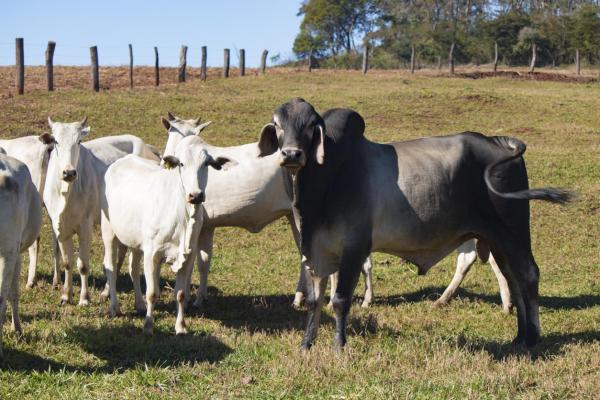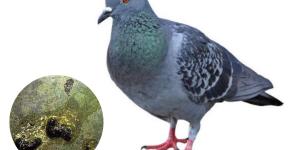Common Cattle Diseases


Cattle are susceptible to many diseases that can cause significant economic losses to farmers and are also considered a serious problem with the potential to affect public health. Many of these diseases are also zoonotic diseases, i.e., diseases that can affect humans if their meat or milk is consumed. Many of these diseases are contagious and therefore difficult to control in large populations of individuals once the animals are infected.
The following AnimalWised article has listed the 8 most common cattle diseases, as well as their more frequent clinical signs and treatment.
The most common bovine cattle diseases
Infectious diseases in cattle used for milk and meat production pose a significant problem with potential implications for public health. These infectious diseases not only impact the well-being of animals, but also present challenges in controlling their spread within large populations once they have been infected. This can result in substantial economic losses and, unfortunately, the need to cull a significant number of infected animals.
The challenges posed by these diseases are not limited to their impact on individual animals alone. Once a disease infiltrates a cattle population, it becomes more challenging to control and can result in significant economic losses. Additionally, the necessity to cull infected animals can have substantial ramifications for both farmers and the industry as a whole.
- Mastitis
- Brucellosis
- Foot and hoof problems
- Bovine respiratory diseases
- Bovine tuberculosis
- Bovine viral diarrhea (BVD)
- Parasitic infections
These diseases encompass a range of health concerns that can affect the productivity, well-being, and overall health of cattle. In subsequent sections, we will explore each of these diseases in more detail, including their causes, symptoms, prevention, and treatment strategies.

Bovine mastitis
Mastitis is a common and economically significant disease that affects cows. It is an inflammatory condition primarily affecting the udder tissue, specifically the mammary glands.
Mastitis can be caused by various bacteria, including Staphylococcus aureus, Streptococcus species, and Escherichia coli, among others. It can also be caused by fungi or viruses, although bacterial infections are the most prevalent.
Mastitis is typically categorized into clinical and subclinical forms:
- Clinical mastitis: is characterized by visible signs, such as abnormal milk appearance (e.g., clots, flakes, or watery milk), swelling, heat, redness, and pain in the affected udder quarters. The cow may exhibit systemic signs of illness, including reduced milk production, fever, and general discomfort. In severe cases, the milk may contain pus or blood.
- Subclinical mastitis: does not display obvious clinical signs, making it challenging to detect without specific testing. It is identified by elevated somatic cell counts (SCC) in the milk, indicating the presence of inflammatory cells. Subclinical mastitis can lead to reduced milk yield, decreased milk quality, and an increased risk of developing clinical mastitis.
Mastitis can be caused by multiple factors, including:
- Poor udder hygiene
- Improper milking techniques
- Unsanitary milking equipment
- Environmental conditions
- Teat-end damage
- Compromised immune function
How to treat it:
To effectively treat mastitis in cows, early detection is crucial. Promptly identifying the infection allows for timely intervention. Infected cows should be isolated to prevent further spread within the herd. While continuing milking, it is important to discard the milk from affected quarters to prevent contamination. Providing supportive care, such as warmth, gentle massage, and proper nutrition, helps alleviate discomfort and supports the healing process. Antibiotic therapy, guided by a veterinarian, is administered to eliminate the bacterial infection.
Bovine brucellosis
Brucellosis is a contagious bacterial disease that can affect cows and other livestock, as well as humans. It is caused by the bacteria Brucella abortus.
Brucellosis in cows is primarily a reproductive disease, leading to abortions, infertility, and reduced milk production. The disease is transmitted through contact with infected tissues, fluids, or by consuming contaminated milk or meat.
Cows infected with brucellosis may exhibit signs such as:
- Abortion
- Retained placenta
- Decreased fertility
- Irregular estrus cycles.
However, some infected cows may not show any visible symptoms, making detection challenging without specific testing.
Brucellosis poses a significant concern for public health due to its zoonotic potential, meaning it can be transmitted from animals to humans. People can contract the disease through direct contact with infected animals, consumption of unpasteurized dairy products, or inhalation of contaminated aerosols. Brucellosis in humans can lead to flu-like symptoms, including fever, fatigue, joint pain, and muscle aches.
How to treat it
Treating brucellosis in cows can be challenging, and there is no specific cure for the disease. Once an animal is infected with Brucella abortus, the bacteria can persist within the cow's reproductive organs, leading to ongoing risks of transmission. As a result, the primary approach to managing brucellosis in cows is through preventive measures, such as vaccination, surveillance, and strict herd management protocols. Infected cows are typically culled to prevent further spread of the disease.
To know more, be sure to read this other article on brucellosis in cattle.
Bovine foot and hoof problems
Foot and hoof problems are common issues that affect the health and productivity of cows. They can cause significant pain and discomfort, leading to reduced mobility, lameness, and decreased milk production. It is essential for farmers and livestock owners to be aware of these issues and take preventive measures to maintain the well-being of their cattle.
- Lameness: lameness is a general term used to describe any abnormality in a cow's gait or movement. It is often caused by foot and hoof problems.
- Hoof trimming: Regular hoof trimming is essential for maintaining healthy hooves in cows. Trimming helps prevent overgrowth, which can lead to uneven weight distribution and increased pressure on certain areas of the hoof.
- Laminitis: laminitis, also known as founder, is a painful inflammatory condition affecting the sensitive laminae within the cow's hoof. It can be caused by factors such as high-grain diets, sudden dietary changes, obesity, stress, and metabolic disorders.
- Sole ulcers: are lesions that occur on the sole of the cow's hoof, often caused by excessive pressure or bruising. They can result from improper weight distribution, poor hoof conformation, or standing on hard surfaces for extended periods.
- White line disease: White line disease, also known as seedy toe or hoof wall separation, is a condition in which bacteria and fungi invade the inner layers of the hoof wall. It typically starts with separation between the hoof wall and the underlying structures, leading to a weakened hoof and potential infection.
- Digital dermatitis: commonly referred to as "hairy heel warts," is a contagious bacterial infection affecting the skin of the cow's hooves. It is characterized by painful, ulcerative lesions, often with a hairy appearance.
How to treat it
The treatment of foot and hoof problems in cows will depend on the specific condition or injury.

Bovine respiratory diseases
Bovine respiratory disease (BRD), also known as shipping fever pneumonia or undifferentiated fever, is a respiratory disease of cattle of multifactorial etiology. Mannheimia haemolytica and, less commonly, Pasteurella multocida, Histophilus somni or Mycoplasma bovis are the important bacterial agents involved.
It is the most common and costly disease affecting beef cattle in the world. The infection is usually a sum of three codependent factors: stress, an underlying viral infection, and a new bacterial infection.
Clinical signs that would lead you to suspect bovine respiratory disease include the following:
- Depression
- Loss of interest in surroundings
- Lethargy
- Unwillingness to move
- Extended head
- Droopy ears
- Discharge from the eyes, nose, and mouth
- Coughing
- Rapid shallow breathing
How to treat it
The use of broad-spectrum antimicrobials labeled for bovine respiratory disease is the primary treatment, with macrolides and fenicols most commonly used as first-line treatment. Immunization with modified live or killed virus vaccines generally provides adequate protection against clinical disease.
Bovine clostridial diseases
Clostridial diseases are caused by bacteria of the genus Clostridium. These bacteria are commonly found in soil and the digestive tracts of animals.
Clostridial diseases can cause a variety of symptoms, including:
- Enterotoxemia (also known as purple gut)
- Severe diarrhea/stomach upset
- Abdominal pain
- Bloat
- Decreased appetite/intestinal movement
- Abomasum distention
- Leaky gut
- Bubbles in the manure
Disease in cattle is triggered by various factors which damage body tissues activating latent spores, followed by very rapid multiplication in the animal's body with toxin production, causing death within hours.
How to treat it
The response to antibiotic treatment is very poor. Prevention of clostridial diseases by vaccination should be seriously considered in cattle where there is a history of disease on the farm or where risk factors exist.
Bovine tuberculosis
Bovine tuberculosis is a chronic bacterial disease of animals caused by members of the Mycobacterium tuberculosis complex, primarily by M. bovis. It is a major zoonotic disease, and cattle are the main source of infection for humans.
The symptoms of bovine tuberculosis in cows include:
- Coughing
- Weight loss
- Fever
- Enlarged lymph nodes
In some cases, the cow may also experience difficulty breathing and rib pain.
How to treat it
The antibiotics used to treat bovine tuberculosis are usually a combination of isoniazid, rifampin, pyrazinamide, and ethambutol. The treatment can last for 6-12 months, and it is important to complete the full course of antibiotics to ensure that the disease is completely eradicated.

Bovine viral diarrhea (BVD)
Bovine viral diarrhea (BVD) is a viral disease of cattle that can cause a range of clinical signs from mild or inapparent infections to severe disease characterized by diarrhea, fever, oral erosions, and immunosuppression. The disease is caused by the bovine viral diarrhea virus (BVDV), which is a member of the Pestivirus genus of the Flaviviridae family.
The clinical signs vary from no obvious illness to:
- Fever
- Nasal discharge
- Oral lesions
- Diarrhea
- Decreased milk production
- Pneumonia
- Infertility or abortion in pregnant females
How to treat it
While this virus has no cure, practicing supportive therapies such as increasing feed and water intake will temporarily help to improve the well-being of your cattle. Infected calves should be culled to prevent the spread of BVD.
Some infected animals may die, while others will recover, usually within one or two weeks. Occasionally an animal will die very quickly before other signs are apparent. Since BVD is a viral disease, antibiotics are ineffective.
This article is purely informative. AnimalWised does not have the authority to prescribe any veterinary treatment or create a diagnosis. We invite you to take your pet to the veterinarian if they are suffering from any condition or pain.
If you want to read similar articles to Common Cattle Diseases, we recommend you visit our Infectious diseases category.
- BOE-A-2016-3265








